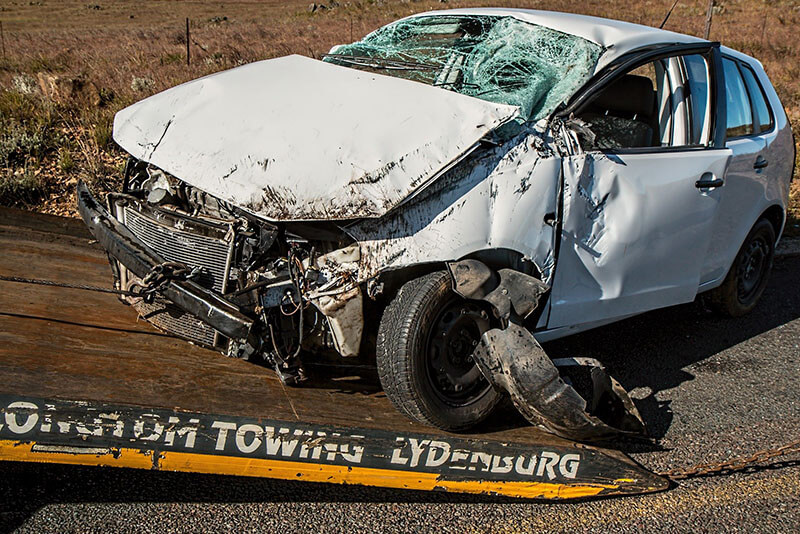The Gist: Navigating the aftermath of a car accident in Austin requires taking specific legal steps immediately to protect your rights, ensure proper documentation, and strengthen any potential claims for compensation.
After a collision on Austin’s congested roads, the aftermath can be overwhelming. Texas law requires specific steps to ensure safety and protect your legal rights—steps that can also affect your ability to recover compensation for medical bills, lost income, and property damage.
This guide outlines what Austin drivers must do after an accident, from securing the scene and documenting the incident to properly notifying authorities. You’ll learn when police reports are required under the Texas Transportation Code, how to exchange information, and why taking photos is critical.
We also cover when to inform your insurance company and when speaking to a personal injury attorney is a smart move. In a city where crashes are rising and insurers often minimize payouts, these early actions are crucial for safeguarding your financial and legal future.
Key Highlights
- First, ensure everyone’s safety by moving vehicles to the roadside if possible, turning on hazard lights, and checking for injuries before doing anything else.
- Document everything at the scene – take clear photos of vehicle damage, road conditions, and visible injuries. Collect names, contact information, and insurance details from all drivers involved, and note contact information from any witnesses.
- Call 911 if there are injuries or significant vehicle damage. Even for minor accidents, having an official police report is valuable, so be sure to get the crash report number before leaving.
- Contact your insurance company right away. Be honest and thorough when describing what happened, and provide them with the police report number to initiate your claim.
- Consider talking to a personal injury attorney, especially if you’ve been hurt. Texas has a two-year statute of limitations for car accident claims, but it’s best to get legal advice early to protect your rights and understand your options.
Ensuring Safety at the Accident Scene
Quick Take: Safety is the non-negotiable priority after any vehicle collision. From checking for injuries to systematically documenting the scene, these immediate actions protect lives, strengthen potential claims, and create a clear record of events that insurance companies and legal authorities will require during resolution processes.
In the chaotic moments following a collision, establishing safety protocols becomes your first line of defense against further harm. Conducting a rapid assessment of all involved individuals—drivers, passengers, and any nearby pedestrians—helps identify critical injuries requiring immediate medical attention. As a result, you create an environment where professional help can be dispatched efficiently, potentially saving lives when minutes matter most.
That’s why safety experts recommend moving damaged vehicles to the roadside when possible, activating hazard lights, and setting up reflective triangles to alert oncoming traffic. Over time, these precautionary measures have proven effective at preventing secondary accidents, which occur surprisingly often when other drivers become distracted by the initial collision scene. Your quick thinking transforms a dangerous situation into a controlled environment where proper documentation and information exchange can safely occur.
Take these immediate post-accident safety actions to protect everyone involved and preserve critical evidence:
- Call emergency services immediately if anyone shows signs of injury, even if they seem minor (some serious injuries present symptoms hours later)
- Position yourself and others in a safe location away from traffic, preferably behind guardrails or on sidewalks
- Document the scene thoroughly with photos from multiple angles, capturing vehicle positions, damage details, license plates, and road conditions
- Exchange comprehensive information including driver’s licenses, insurance details, vehicle registrations, and contact information with all parties
- Collect witness statements and contact information before they leave the scene
- Note environmental factors that may have contributed to the accident (weather, road hazards, traffic signal malfunctions)
Responding methodically to an accident situation creates both immediate safety benefits and long-term advantages when dealing with insurance claims. The documentation you gather serves as your objective record of events, often becoming the determining factor in liability decisions when memories fade or accounts conflict.
Additionally, experienced attorneys understand the complexities of personal injury law, which can significantly impact your case outcomes. Remember that your primary responsibility at any accident scene is preserving human safety first, followed by creating a thorough, accurate record that protects your legal and financial interests throughout the claims process. Consulting an experienced personal injury lawyer can provide crucial guidance on navigating the complexities of insurance claims and ensuring fair compensation for your injuries.
Contacting Emergency Services and Authorities
Quick Take: After a car accident in Austin, immediate action is critical for safety and legal protection. Call 911 for injuries or significant damage to get emergency responders on scene, who can provide medical care and help document the incident. An official police report serves as essential evidence for insurance claims and potential legal proceedings.
In the chaotic moments following a car accident, your immediate actions can significantly impact both your physical recovery and legal standing. Emergency services not only provide critical medical care but also create an official record of the incident that becomes invaluable during insurance negotiations and potential legal proceedings. That’s why contacting 911 should be your first priority when injuries or substantial vehicle damage are present.
As a result of prompt emergency response, hidden injuries that might not be immediately apparent can be properly assessed before they worsen. Over time, the documentation gathered at the scene—particularly the official crash report—becomes the foundation for establishing fault, determining compensation, and resolving disputes between involved parties. The report number serves as your reference point for all subsequent communications with insurance companies and legal representatives. Additionally, having legal representation is crucial, as it ensures that your rights are protected throughout the claims process.
Critical steps to take immediately after an accident in Austin:
- Request police presence even for seemingly minor accidents, as their documentation carries more weight with insurance companies
- Obtain the crash report number before leaving the scene for streamlined follow-up with insurance and legal representatives
- File a CR-2 “Driver’s Crash Report” with TxDOT within 10 days if police cannot respond to the scene
- Ask responding medical personnel to document all symptoms, even minor ones that could develop into serious conditions
- Take photos of the police officers’ badges and get their names for accurate reference in your personal documentation
The actions you take in those first critical moments establish the foundation for your case and can significantly influence the outcome of insurance claims and potential legal proceedings. Remember that proper documentation serves as your protection against future disputes, ensuring that your version of events is officially recorded and accessible when needed. Additionally, consider consulting a wrongful death attorney if the accident leads to severe consequences for your loved ones.
Exchanging Information With Involved Parties
Quick Take: Following an accident, systematically gathering information from all parties is critical for insurance claims and legal protection. Collect personal details, vehicle information, insurance data, and witness statements to create a comprehensive record that strengthens your position and streamlines the claims process.
After the immediate safety concerns are addressed, exchanging complete information with all parties involved becomes the cornerstone of post-accident resolution. This critical step creates an official record that insurance companies require and that may ultimately protect your legal interests should disputes arise. Without thorough documentation, you risk complications that could delay compensation or impact liability determinations.
That’s why insurance providers and legal experts consistently emphasize the importance of comprehensive information gathering at accident scenes. The documentation you collect serves as objective evidence that can substantiate your account of events and counter potential discrepancies in others’ recollections. As a result, taking a methodical approach to information exchange significantly strengthens your position during claims processing and potential settlement negotiations.
Essential information to collect at an accident scene includes:
- Complete contact details (full names, addresses, phone numbers, email addresses) from all drivers and passengers
- Driver’s license numbers, license plate information, and vehicle registration details
- Insurance carrier names, policy numbers, and agent contact information
- Vehicle specifics including make, model, year, color, and visible damage assessment
- Witness names and contact information, along with brief notes about their vantage point
- Names and badge numbers of responding police officers and the accident report number
The information exchange process represents a pivotal moment that can dramatically influence the trajectory of post-accident proceedings. By approaching this task with thoroughness and attention to detail, you establish a foundation for accountability that supports fair resolution. Remember that documentation is your strongest ally in navigating insurance claims and potential legal challenges, transforming a chaotic accident scene into an organized case for rightful compensation.
Documenting the Accident Scene Thoroughly
Quick Take: After a car accident, thoroughly documenting the scene becomes your strongest legal asset. Capturing comprehensive photos, gathering witness information, recording environmental conditions, and tracking your injuries creates an indisputable evidence trail that strengthens your position during insurance negotiations and potential litigation.
In the disorienting moments following a collision, your ability to collect and preserve evidence directly impacts the outcome of any subsequent legal proceedings. What might seem like minor details—a skid mark on the pavement, the exact position of vehicles, or the timing of traffic signals—often becomes pivotal evidence that insurance adjusters and attorneys rely on to reconstruct the accident narrative. That’s why accident documentation requires both presence of mind and methodical attention to what might otherwise go unnoticed.
As time passes after an accident, crucial evidence deteriorates, memories fade, and witnesses become harder to locate. Consequently, your immediate actions at the scene establish the foundation for any future claims. Moreover, thorough documentation creates a comprehensive factual record that helps overcome potential disputes about liability, damages, or injury causation that commonly arise during settlement negotiations.
Your documentation checklist should include:
- Comprehensive vehicle damage photos showing all affected areas from multiple angles and distances
- Environmental evidence including road conditions, weather visibility, traffic signal positions, and any infrastructure issues
- Witness contact information with brief notes about their vantage point and what they observed
- Medical documentation beginning at the scene and continuing through all treatment phases
- Personal impact records noting how injuries affect daily activities, work capabilities, and quality of life
- Police report information including officer names, report numbers, and how to obtain the official documentation
The difference between adequate and exceptional accident documentation often determines whether your claim receives fair compensation or faces unnecessary challenges. When you methodically capture the accident scene’s reality, you transform from a victim of circumstances to an empowered advocate for your own interests. This evidence-based approach not only strengthens your legal position but also provides peace of mind during what is typically a stressful recovery process.
Notifying Your Insurance Provider
Quick Take: After a car accident, prompt insurance notification is crucial for claim success. Texas law typically requires reporting within 30 days, and delays may result in claim denial. Providing accurate details, documenting all communications, and including the police report number creates a solid foundation for successful claim resolution.
Reporting your accident to your insurance company establishes the official timeline for your claim and preserves your coverage rights. As a result, insurance providers can begin processing your claim immediately, mobilizing adjusters and initiating damage assessments without unnecessary delays. That’s why insurance experts consistently emphasize that the first 24-48 hours following an accident are critical for proper documentation and notification.
Many policyholders underestimate how quickly claim denial issues can develop from delayed reporting. Over time, evidence deteriorates, witness memories fade, and insurance companies become increasingly skeptical of claims filed weeks after incidents. Furthermore, prompt notification allows your insurer to conduct thorough investigations, potentially identify fraudulent claims from other parties, and properly advise you on next steps regarding medical treatment and vehicle repairs.
When contacting your insurance provider, be prepared with these essential details:
- Date, time, and precise location of the accident, including cross streets or mile markers
- Names and contact information of all involved parties and witnesses
- Vehicle information including year, make, model, and visible damage
- Police report number and responding officer’s name and badge number
- Photos of the accident scene, vehicle damage, and any visible injuries
- Weather and road conditions that may have contributed to the incident
Creating a comprehensive record of your claim communications safeguards your interests throughout the claims process. Insurance adjusters handle hundreds of cases simultaneously, making it essential for you to maintain your own detailed documentation. Remember that proper notification isn’t just about fulfilling a contractual obligation—it’s about positioning yourself for fair treatment and maximum coverage during a stressful situation.
Seeking Legal Guidance From an Attorney
Bottom Line: After an Austin car accident, consulting an attorney isn’t just advisable—it’s potentially transformative for your recovery and compensation. Legal counsel navigates Texas’ two-year statute of limitations, confronts insurance tactics, documents injuries properly, applies comparative negligence principles, and preserves critical evidence to strengthen your position throughout the claims process.
Following a car accident, the decisions you make within the first few days can significantly impact your financial and physical recovery trajectory. Most accident victims underestimate how quickly evidence disappears, witness memories fade, and insurance companies build their defense strategies. As a result, consulting with an experienced attorney immediately after seeking medical attention creates a protective barrier between you and the parties working to minimize your claim.
That’s why legal representation serves as both shield and advocate during a vulnerable period when you should be focusing on healing. Insurance adjusters begin working within hours of an accident report, often contacting victims when they’re still processing trauma or under medication. Over time, what initially seems like a straightforward claim can become complicated by pre-existing conditions, shared fault arguments, or insufficient documentation—challenges an attorney anticipates and addresses proactively.
A qualified car accident attorney delivers crucial advantages through:
- Strategic communication with insurance companies that prevents damaging statements and claim devaluation
- Comprehensive evidence collection including traffic camera footage, accident reconstruction, and vehicle black box data
- Medical documentation coordination with healthcare providers to establish causation between the accident and injuries
- Accurate damages calculation incorporating future medical needs, lost income potential, and diminished quality of life
- Navigation of Texas’ modified comparative negligence system to maximize recovery when partial fault exists
- Timely filing of all required documentation to preserve legal rights and prevent procedural dismissals
The investment in legal representation typically pays dividends through significantly higher settlements, even after attorney fees. Most accident victims who handle claims independently never discover what their case was truly worth, accepting initial offers that fail to account for long-term consequences. When you partner with an attorney, you transform from a vulnerable individual facing powerful adversaries into an informed plaintiff with professional advocacy and the legal leverage necessary to pursue full and fair compensation under Texas law.
In Summary
Final Thought: After an Austin car accident, prioritize safety first, then contact police to file a report and document the scene thoroughly with photos and witness information. Promptly notify your insurance company, seek medical attention even for minor injuries, and consult with a qualified attorney who understands Texas liability laws to protect your rights during the claims process.
The aftermath of a car collision creates a critical window where your actions can significantly impact future legal proceedings. Documenting evidence at the scene provides a foundation for establishing fault under Texas’s comparative negligence system. Taking photos of vehicle damage, road conditions, and visible injuries creates an objective record that insurance adjusters and legal representatives can reference when determining liability percentages. Witness statements collected immediately often contain details that might fade with time, strengthening your position during settlement negotiations.
Consulting with an attorney experienced in Austin’s traffic laws doesn’t commit you to litigation but equips you with essential knowledge about your specific situation. Batrice Law Firm helps accident victims understand complex insurance notification requirements and potential compensation avenues without risking policy violations. Texas’s statute of limitations gives you limited time to pursue claims, making early legal guidance valuable even in seemingly straightforward cases. Your attorney can also coordinate with medical providers to ensure your treatment documentation properly reflects accident-related injuries, addressing both immediate and potential long-term health impacts.




